
|
|
|
|
|
|
2002
The Euro enters circulation
The euro was established by the provisions in the Maastricht Treaty of 1992. To participate in the currency, Member States were required to meet strict criteria, such as a budget deficit of less than 3% of GDP, a debt ratio of less than 60% of GDP, low inflation, and interest rates close to the EU average.
The euro was introduced to world financial markets as an accounting currency on 1 January 1999, with Euro coins and banknotes entering circulation on 1st January 2002. It became the second largest reserve currency and the second most traded currency in the world after the U.S. dollar.
The euro became the sole currency of 17 EU Member States: Austria, Belgium, Cyprus, Estonia, Finland, France, Germany, Greece, Ireland, Italy, Luxembourg, Malta, the Netherlands, Portugal, Slovakia, Slovenia and Spain. These countries comprised the "eurozone"; some 330 million people in total.
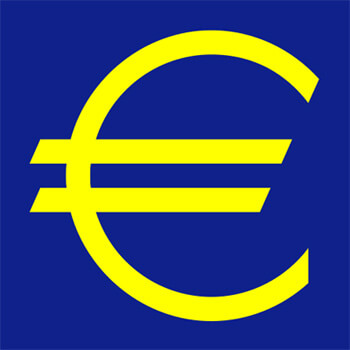
Apple introduces the iMac G4
The iMac G4 was produced by Apple from early 2002 to mid-2004. It replaced the aging iMac G3. This computer featured a radical new design with a 15" LCD screen mounted on an adjustable arm above a hemisphere containing a tray-loading optical drive. CPU speeds ranged from 700 Mhz to 1.25 Ghz.
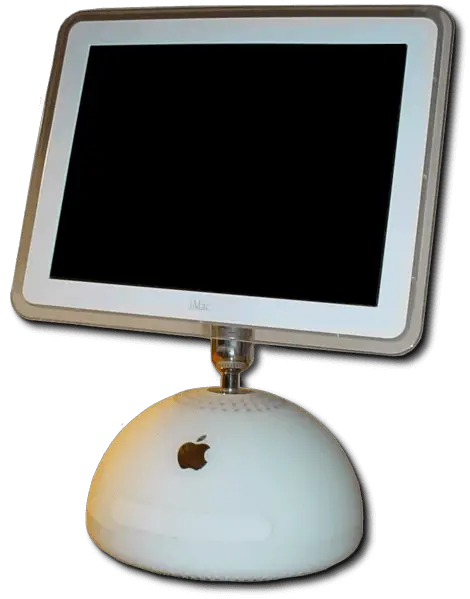
Eruption of Mount Nyiragongo
Mount Nyiragongo, located in the Democratic Republic of Congo, erupted on 17th January 2002, creating a large-scale humanitarian crisis. The volcano's eruption killed 245 people and displaced an estimated 400,000 as lava flows destroyed 40% of the city of Goma, wiping out homes and infrastructure.
This natural disaster further exacerbated the existing instability and conflict within the region. International organisations rallied to provide relief, but the combination of political unrest and the scale of the disaster presented a significant challenge. Another major eruption occurred in 2021.
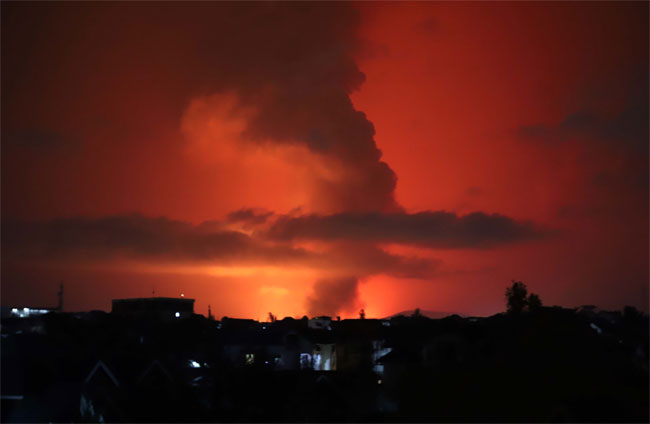
MONUSCO Photos, CC BY-SA 2.0, via Wikimedia Commons
Ending of the Sierra Leone Civil War
The Sierra Leone Civil War, which started in 1991, was a brutal conflict marked by egregious human rights abuses, including widespread killing, rape, and mutilation. The war was fuelled by various factors, including competition over the country's diamond resources, corruption, and poverty. The Revolutionary United Front (RUF), led by Foday Sankoh and supported by Charles Taylor's government in neighbouring Liberia, fought against the government forces, with the conflict drawing in a multitude of other actors including local militia groups, mercenaries, and UN peacekeeping troops. The resulting civil war lasted for 11 years, enveloping the country. It left an estimated 50,000 to 70,000 people dead, with 2.5 million displaced internally and externally.
The conflict came to an end in January 2002, marking a significant turning point for Sierra Leone. The formal conclusion of the war was declared after the successful disarmament of about 45,000 fighters. British forces played a key role in stabilising the country, and the United Nations Mission in Sierra Leone (UNAMSIL) conducted one of the largest disarmament and demobilisation operations in history.
On 18th January 2002, President Ahmad Kabbah confirmed the end of the war in a ceremony attended by international dignitaries. In his speech, he expressed optimism about the future and a commitment to addressing the causes of the conflict. The end of the war opened up a period of reconstruction and peacebuilding – focused on reconciliation, justice, and the reintegration of former combatants into society. It also led to the establishment of the Special Court for Sierra Leone (which followed the earlier Truth and Reconciliation Commission), instrumental in dealing with the war crimes committed during the conflict. The ending of the Sierra Leone Civil War marked a significant moment for international justice and post-conflict reconstruction, setting important precedents for how the international community handles such situations.
In May 2002, the Sierra Leone People's Party (SLPP) won landslide victories in the presidential and legislative elections, with 70% of the vote, winning 83 of the 112 seats. Kabbah was re-elected for a five-year term. The Revolutionary United Front Party (RUFP) failed to win a single seat in parliament.
The exploitation of Sierra Leone's diamonds – a central element of the 1991–2002 war – inspired the terms "blood diamond" and "conflict diamond". The civil war served as the background for the 2006 movie Blood Diamond, starring Leonardo DiCaprio, Djimon Hounsou and Jennifer Connelly.
2002 Winter Olympics
The 2002 Winter Olympics took place in Salt Lake City, Utah, USA, from 8th–24th February 2002. The games came just a few months after the 9/11 attacks, adding a layer of poignancy and unity to the event. A record 77 nations, with 2,399 athletes, participated across 78 events in seven sports. Germany led the medal count with a total of 36, followed by the United States with 34 and Norway with 25.
A key moment of the Games was the opening ceremony, which included a tribute to the victims of the 9/11 attacks. A damaged American flag recovered from the wreckage of the World Trade Center was carried by an honour guard of athletes. Utah's Native American heritage was also celebrated.
The 2002 Winter Olympics were the first Winter Olympics held after the formation of the World Anti-Doping Agency, resulting in the first instances of athletes being disqualified for failing drug testing. Athletes in cross-country skiing were disqualified for various reasons, including doping by two Russians and a Spaniard, leading Russia to file protests and threaten to withdraw from the games. The games were also noted for a judging scandal in the pairs figure skating, which led to a shared gold medal for the Russian and Canadian pairs.
Despite the controversy, the 2002 Winter Olympics were hailed as a financial success for Salt Lake City and left a lasting legacy in terms of sports venues and infrastructural development.
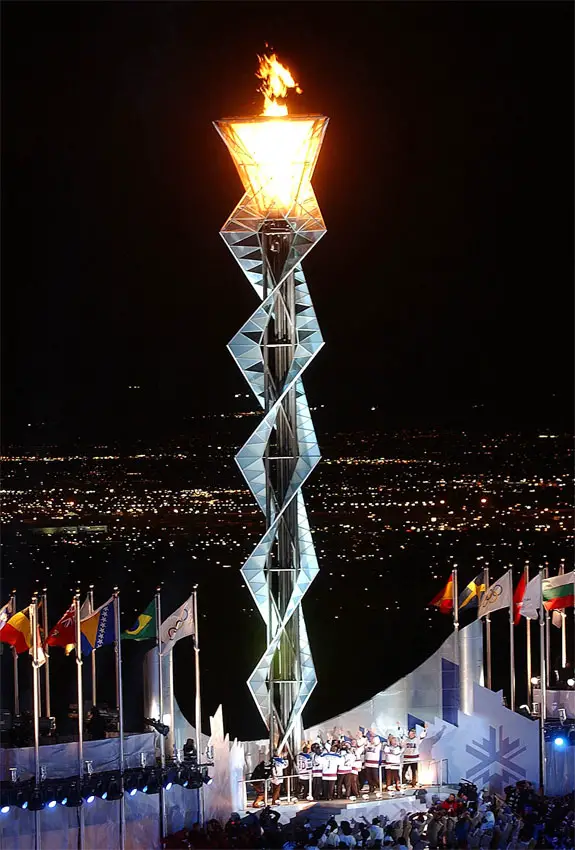
The trial of Slobodan Milošević begins
On 12th February 2002, former Yugoslav President Slobodan Milosevic was brought to trial at The Hague, marking a significant moment in international law. Milosevic faced 66 charges for war crimes, crimes against humanity, and genocide, linked to the conflicts that engulfed the Balkans during the 1990s. He pleaded not guilty to all the charges.
The trial was conducted by the International Criminal Tribunal for the former Yugoslavia (ICTY), established by the United Nations. It was the first time a former head of state had been indicted and brought before an international tribunal.
Milosevic's trial underscored the global commitment to holding powerful individuals accountable for grave crimes, regardless of their position. The process was fraught with challenges, however, including Milosevic's refusal to accept legal representation and his eventual death in 2006 before the trial concluded, which left many questions unanswered.

https://www.flickr.com/people/icty/, CC BY 2.0, via Wikimedia Commons
SpaceX is founded
Space Exploration Technologies Corp., better known as SpaceX, was founded on 14th March 2002 by Elon Musk. The entrepreneur had recently made his fortune as co-founder of PayPal, an online payment service, which eBay acquired in the same year for $1.5 billion. Musk founded SpaceX with $100 million of the money he made and became the company's CEO and Chief Engineer.
Musk's long-term vision was to reduce space transportation costs and enable the colonisation of Mars. In 2002, SpaceX was just a tiny startup with only a handful of employees. By 2005, however, it had grown to 160 employees.
The company's first rocket, the Falcon 1, was a small-lift launch vehicle standing 21 m (69 ft) tall, with a mass of 28 tons (62,000 lb) and two stages. A first launch attempt in 2006 resulted in engine failure after 33 seconds. Two subsequent launches also failed. However, a fourth flight in 2008 succeeded and became the first privately funded and developed liquid-propellant rocket to reach orbit. A fifth launch also reached orbit in 2009, before SpaceX retired the Falcon 1 and focused on developing the much larger Falcon 9.
SpaceX would go on to become a phenomenally successful company – pioneering the use of reusable rockets, which land back on Earth after delivering their payloads to space, significantly reducing the cost of space travel. In addition to Falcon 9, the company developed and manufactured the Falcon Heavy and Starship heavy-lift launch vehicles, the Cargo Dragon and Crew Dragon spacecrafts, and the Starlink satellite mega-constellation.
By the early 2020s, the company had achieved a valuation of more than $100 billion. It had conducted hundreds of Falcon 9 launches, which included many important contracts with NASA, along with a smaller number of Falcon Heavy and Starship rocket launches, with an overall launch success rate of 97.4%.

SpaceX headquarters at Hawthorne, California. Steve Jurvetson, CC BY 2.0, via Wikimedia Commons
The world's first cyborg
In 2002, cybernetics professor Kevin Warwick at the University of Reading, UK, achieved a major breakthrough in the field of brain-computer interfaces (BCI). This landmark project consisted of two experiments, both carried out by Professor Warwick himself.
The first involved an array of 100 electrodes, implanted into his arm. These were able to connect directly with his central nervous system and send an electrical signal outside his body. Using this method, Professor Warwick successfully manipulated a robotic hand, using nothing but nerve impulses. Further experiments included long distance control via the Internet, as well as the control of a powered wheelchair.
The second stage of the project was direct, artificial connectivity between two humans. This too was successfully demonstrated. Using the Internet as the go-between, signals were sent between him and his wife. Although the effects were only small, it was the first time that nerve signals had been sent artificially between two humans.* After the experiment, it was proven that the interfaces left minimal damage to tissue.

Credit: Robert
Skoble (CC BY 2.0)
Assassination of Pim Fortuyn
On 6th May 2002, during the 2002 national election campaign, Dutch politician Pim Fortuyn was shot dead in Hilversum, Netherlands. Fortuyn had been a controversial figure due to his outspoken criticism of Islam and immigration policies. He was killed by Volkert van der Graaf, a left-wing environmentalist and animal rights activist.
This event, marking the first political assassination in the Netherlands in over 300 years, sent shockwaves throughout the country and led to a heated national debate on issues of free speech, political violence, and the social implications of controversial views.
Van der Graaf was sentenced to 18 years in prison. The sentence was upheld after he appealed. He was released on parole in 2014 after completing two-thirds of his sentence and subsequently lived in Apeldoorn, Gelderland.
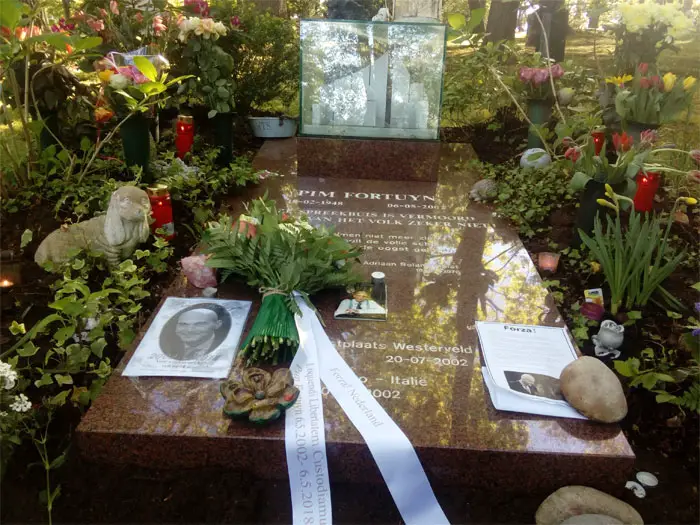
China Airlines Flight 611 crashes into the Taiwan Strait
China Airlines Flight 611, a Boeing 747, disintegrated in mid-air and crashed into the Taiwan Strait on 25th May 2002. All 225 passengers and crew members aboard the flight perished, making it the deadliest air disaster in Taiwanese history.
Investigations into the crash revealed that it was caused by improper repairs to the plane's fuselage following a tailstrike incident more than two decades earlier (seen in the video below at 0:08). The accident sparked renewed discussions about aviation safety and maintenance standards and led to improved procedures and regulations.
2002 FIFA World Cup
The 2002 FIFA World Cup kicked off on 31st May 2002 and lasted until 30th June 2002, marking a historic moment as the tournament was held in Asia for the very first time. It was also the first World Cup to be jointly hosted by more than one nation – in this case, South Korea and Japan.
Teams from 32 countries participated, with 64 matches played across 20 venues. Brazil ultimately clinched the title, winning 2–0 against Germany in the final and reinforcing their status as one of the sport's most successful nations. The team, led by coach Luiz Felipe Scolari, and featuring talents such as Ronaldo, Rivaldo, and Ronaldinho, dazzled fans with their skill and creativity. Their victory marked Brazil's fifth World Cup win.
The successful hosting of the tournament by South Korea and Japan boosted the sport's popularity in Asia.

18th June 2002: South Koreans watching their country play in a knock out game on the big screens in Seoul Plaza.
The dwarf planet Quaoar is discovered
Quaoar is a binary, trans-Neptunian object and dwarf planet. It was discovered in June 2002 by astronomers at the California Institute of Technology. It orbits at 43 astronomical units (6.4×109 km; 4.0×109 mi) from the Sun with an orbital period of 289 years. It has a single tiny moon called Weywot.
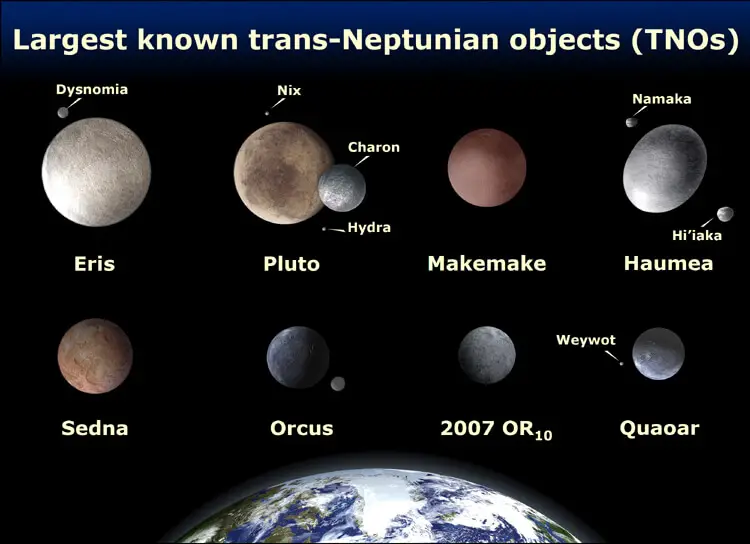
The International Criminal Court (ICC) is established
On 1st July 2002, the International Criminal Court (ICC) was established to prosecute individuals for serious international crimes, including genocide, crimes against humanity, war crimes, and the crime of aggression.
The establishment of the ICC, based in The Hague, Netherlands, was a significant development in international law. It enabled a permanent international tribunal to prosecute individuals for the gravest acts, when national courts were unwilling or unable to do so, promoting accountability and justice on a global scale.
The Rome Statute, which established the ICC, was initially ratified by 60 countries. Over the next two decades, this number grew to over 120. Each state became legally obligated to co-operate with the Court when required, such as arresting and transferring indicted persons or providing access to evidence and witnesses.
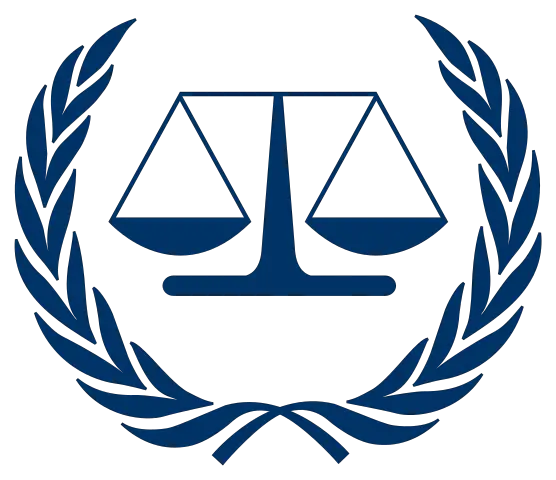
Sknyliv air show disaster
On 27th July 2002, a catastrophic accident occurred during an airshow in Lviv, Ukraine, when a Sukhoi Su-27 fighter jet crashed into a crowd of spectators at the Sknyliv airfield.
Flown by two experienced pilots, the aircraft entered a rolling manoeuvre with a downward trajectory at low altitude. It rolled upright once more and was still descending rapidly when the left wing dropped shortly before it hit the ground. The aircraft flattened out initially, skidding over the ground towards stationary aircraft and striking a glancing blow against the nose of an Ilyushin Il-76 transport plane, before exploding and cartwheeling into the crowd.
Both pilots ejected in time and survived with only minor injuries. However, the crash resulted in the deaths of 77 people, including 28 children, making it the deadliest air show accident in history. A total of 543 people were injured, with 100 requiring hospitalisation. Some bystanders suffered serious mental disorders from what they witnessed. This tragic event sparked widespread criticism of safety standards at air shows, leading to tighter regulations and a re-evaluation of procedures for future events.
Switzerland joins the United Nations
Switzerland, known for its long-standing policy of neutrality, took a historic step by joining the United Nations (UN) on 10th September 2002. This followed a nationwide referendum in which 55% of voters and cantons supported the move, highlighting a changing attitude towards international engagement.
For many decades, Switzerland had maintained observer status at the UN, providing humanitarian assistance and hosting diplomatic negotiations without being a full member. Its entry into the UN symbolised a departure from absolute neutrality and a willingness to play a more active role in global affairs, while still retaining its tradition of non-aggression and peace mediation. It became the UN's 190th member, followed by East Timor in the same month.
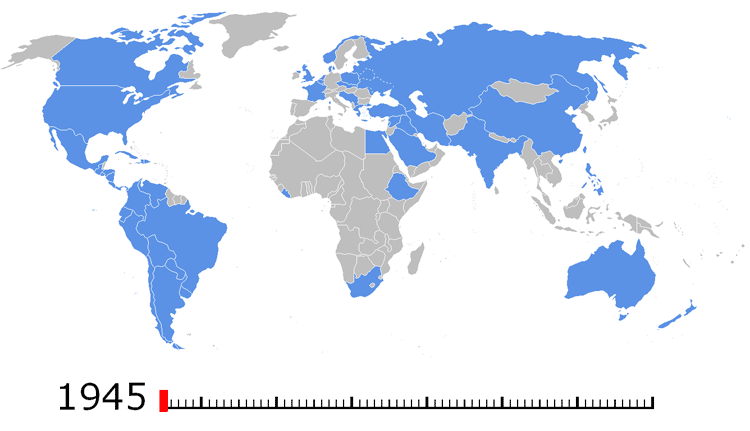
Timeline of UN members, 1945–2002. Credit: Joowwww, CC BY-SA 3.0, via Wikimedia Commons
Introduction of the iRobot Roomba
iRobot, an American technology company, was founded in 1990 by three members of MIT's Artificial Intelligence Lab. On 17th September 2002, they launched a groundbreaking new device called the Roomba, a pioneering development in the world of domestic robotics.
The Roomba was an automatic vacuum cleaner designed to revolutionise home cleaning by taking over a traditionally labour-intensive task. Equipped with advanced algorithms and sensors, it could navigate rooms, adjusting to different surfaces, and avoiding obstacles like furniture or stairs. Its launch marked a significant step towards integrating robotics into everyday life – turning the concept of a home cleaning robot from science fiction into reality.
Following its debut in 2002, the Roomba continued to evolve, with iRobot incorporating new features and improvements in response to consumer needs and technological advancements. Subsequent models included Wi-Fi connectivity for control via smartphone apps, integration with virtual assistants like Amazon's Alexa or Google Home, and advanced mapping technology to allow more efficient cleaning paths and room-specific cleaning.
The Roomba i7, introduced in 2018, included a self-emptying feature and the ability to remember multiple floor plans, making it even more user-friendly for a larger home. The Roomba s9, launched in 2019, made a further leap in design, introducing a D-shape for better corner cleaning and improved sensors for more advanced navigation, as well as superior suction power and a new anti-allergen system for trapping 99% of pollen, mould, and allergens.

The original Roomba, launched in September 2002. Credit: Larry D. Moore, CC BY 4.0, via Wikimedia Commons
Capsizing of MV Le Joola
On 26th September 2002, one of the deadliest maritime disasters in history occurred when the Senegalese government-owned ferry MV Le Joola capsized off the coast of Gambia. Overcrowded with nearly 2,000 passengers – quadruple its capacity – the vessel encountered rough seas and high winds, causing it to overturn. Swiftly sinking, it claimed the lives of 1,863 people. Only 64 survivors were rescued from the waters. The disaster led to widespread grief and outrage in Senegal, prompting governmental changes and calls for better maritime safety regulations.

Credit: Yaamboo, CC BY-SA 3.0, via Wikimedia Commons
The deadliest act of terrorism in the history of Indonesia
The Bali bombings occurred on 12th October 2002 in the tourist district of Kuta on the Indonesian island of Bali. The attack was the deadliest act of terrorism in the history of Indonesia, killing 202 people, 152 of whom were foreign nationals (including 88 Australians), and 38 Indonesian citizens. A further 240 people were injured.
The attack involved the detonation of three bombs – a backpack-mounted device carried by a suicide bomber; and a large car bomb, both of which were detonated in or near popular nightclubs in Kuta; and a third much smaller device detonated outside the U.S. consulate in Denpasar, the latter causing only minor damage.
Various members of Jemaah Islamiyah, a violent Islamist group, were convicted in relation to the bombings, including three individuals who were sentenced to death.
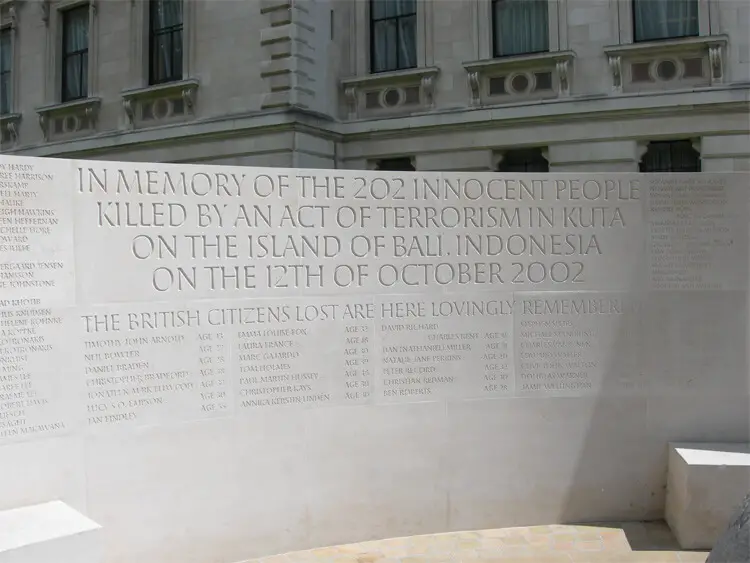
Credit: Dtobias (CC-BY-SA-3.0)
Moscow theatre hostage crisis
A major hostage crisis unfolded on 23rd October 2002, when 50 armed Chechen separatists took 850 people hostage at the Dubrovka Theatre in Moscow during a popular musical performance.
The insurgents demanded an end to Russia's military presence in Chechnya. After a tense 57-hour standoff, Russian special forces released an aerosol anaesthetic into the theatre to incapacitate the hostage-takers. They then stormed the building, resulting in all the attackers being killed.
Unfortunately, the operation led to the deaths of 130 hostages, largely due to the effects of the gas used and inadequate medical response. More than 700 people were injured. The crisis marked a pivotal point in the Chechen conflict, bringing international attention to the ongoing instability in the region.
SARS-CoV-1 outbreak
The SARS-CoV-1 outbreak, also known as Severe Acute Respiratory Syndrome (SARS), began on 16th November 2002 in Guangdong, China. The highly contagious virus quickly spread around the world, with significant outbreaks in Hong Kong, Taiwan, Canada, Singapore, and Vietnam.
In March 2003, the World Health Organization (WHO) issued a global alert, the first such alert for a new disease in the 21st century. SARS – like the subsequent MERS (2012) and SARS-CoV-2 (2019) – was a coronavirus, noted for its severe pneumonia-like symptoms and its ability to spread easily in healthcare settings.
The major part of the outbreak lasted about eight months, and the WHO declared it contained on 5th July 2003. However, several cases continued to be reported until May 2004. Strict isolation of patients and quarantining of contacts helped finally bring it to an end.
Over the course of the SARS epidemic, 30 countries reported 8,096 cases. The death count reached 774, or about 9.6% of those infected. This was a much higher mortality rate than the later SARS-CoV-2 pandemic. The original SARS became a catalyst for advances in coronavirus research, providing scientists with crucial insights into the nature and behaviour of these viruses. When SARS-CoV-2 emerged, researchers were able to leverage this prior knowledge and the genome sequencing of SARS-CoV-1 to quickly identify the new virus and its genetic sequence. Additionally, understanding of the spike protein's role in virus entry from SARS-CoV-1 research enabled the rapid development of targeted vaccines, such as mRNA vaccines by Moderna and Pfizer-BioNTech, which present this protein to the immune system to trigger a protective response.
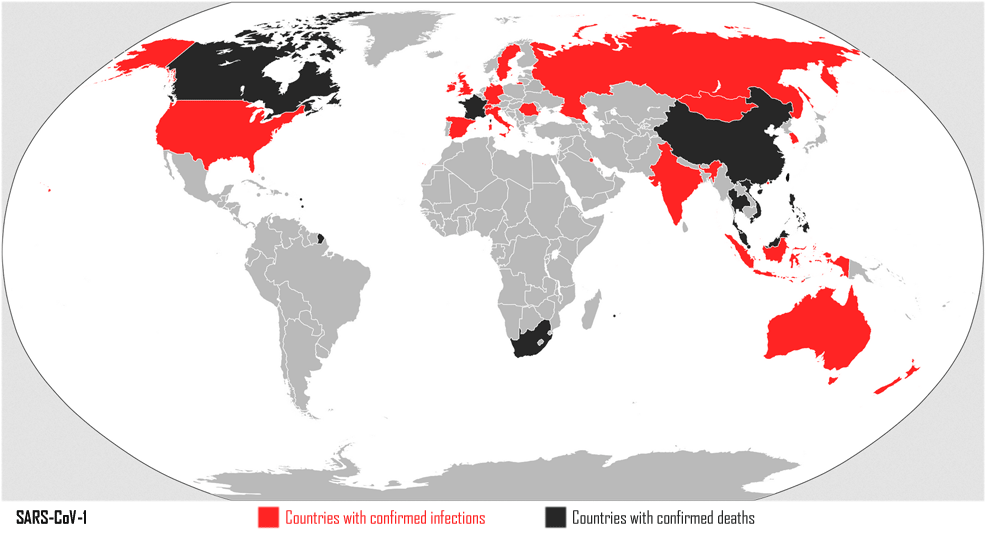
Credit: Maximilian Dörrbecker (Chumwa), CC BY-SA 4.0, via Wikimedia Commons. Adapted by Will Fox.
« 2001 |
⇡ Back to top ⇡ |
2003 » |
If you enjoy our content, please consider sharing it:
References
1 Kevin Warwick, Wikipedia:
https://en.wikipedia.org/wiki/Kevin_Warwick
Accessed 9th July 2023.
![[+]](https://www.futuretimeline.net/images/buttons/expand-symbol.gif)






